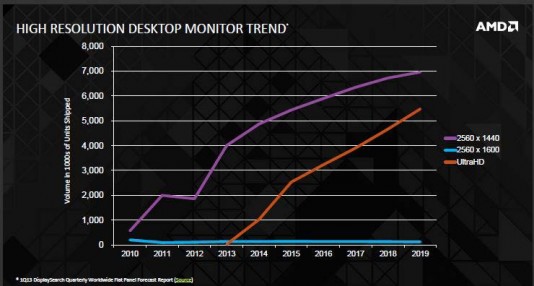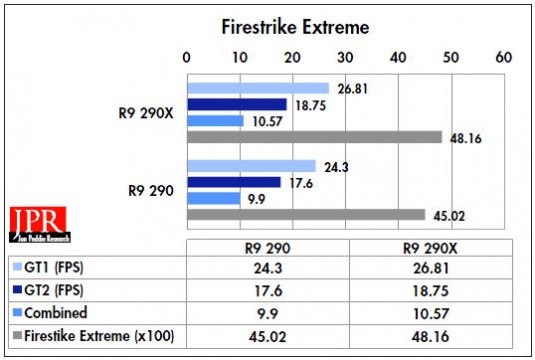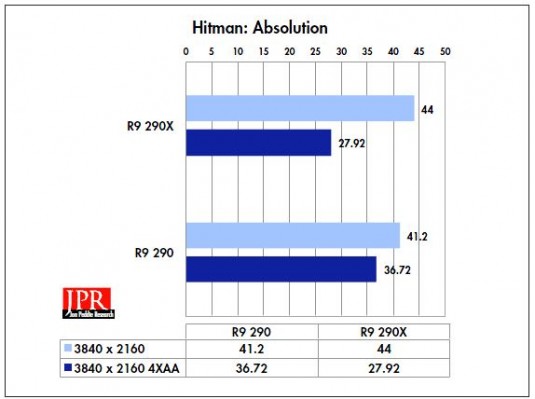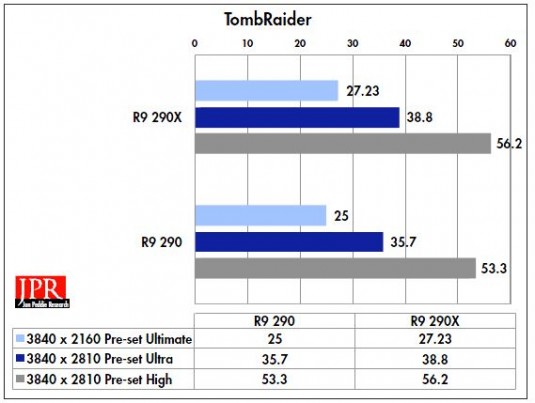The Graphics Core Next architecture is opening up the 4K gamer market.
By C. Robert Dow
There is a shift coming in the high-end gaming segment, with more and more enthusiast gaming, and gamers, converting to Ultra HD. The new high-end AIBs will be tasked with displaying playable frame rates in these higher resolutions while not sacrificing options like TresFX and anti-aliasing.
The R9 290 and 290X, based on AMD’s Graphics Core Next architecture, represent the ultimate in the new HD 7900 series of graphics AIBs from the company. They are built on the 28-nm process like the Performance class versions, the R9 280X and 270X. The R9 290s have 6.2 billion transistors—6.2 billion, can you believe that?—the 290 X has 2816 stream processors vs. the R9 290’s 2560; and the R9 290X has a core clock of 1 GHz while the R9 290 runs at 947 MHz, although both have 4 GB of DDR5.

Given the aspirations of AMD for these boards, we focused all of our testing on the Ultra HD resolutions. The 7900 AIBs run hot, up to and over 90 degrees Celsius, a good 10 degrees hotter than Nvidia’s Titan. AMD’s AIB partners will no doubt have to come up with some innovative cooling methods to keep the boards in check without using too much wattage to do the trick. The new Catalyst Control Center Over- Drive has been redesigned to allow gamers to take advantage of the new PowerTune functionality in the AMD R9 290 Series. It provides the user with a two-dimensional heat map along with fan control to help keep the temperature of the AIB in check.

AMD came up with ZeroCore Power to help the AIB with its power consumption. The company describes it this way: “As soon as the system goes into long idle state and applications are not actively changing the screen contents, the GPU enters the AMD ZeroCore power state. In the AMD ZeroCore power state, the GPU core (including the 3D engine/compute units, multimedia and audio engines, displays, memory interfaces, etc.) is completely powered down.”
The tests
The R9 290 series is impressive, receiving the highest Pmark score we’ve seen in a while. Sadly, we didn’t have Nvidia’s new Ti AIB to put in the mix, but we hope to correct that soon. In terms of raw benchmark scores, the charts tell the story. Even at 4K the R9 290s get amazing results.



What do we think?
Given the price of the GTX 780 family, with the GTX 780 is retailing for $515 and the 780 TI for $700, the HD 7900 series should be attractive to consumers with its lower prices of $549 and $349. The boards stack up to their counterparts in Ultra HD performance, but they will run hotter and use more power. We are really looking forward to see what AMD board partners have in mind for the 290 and 290X. With some extra cooling (which will no doubt come with extra cost), we can see an increase in the frame rates in Ultra HD. There is no doubt 2014 will be the year of 4K in enthusiast gaming.





